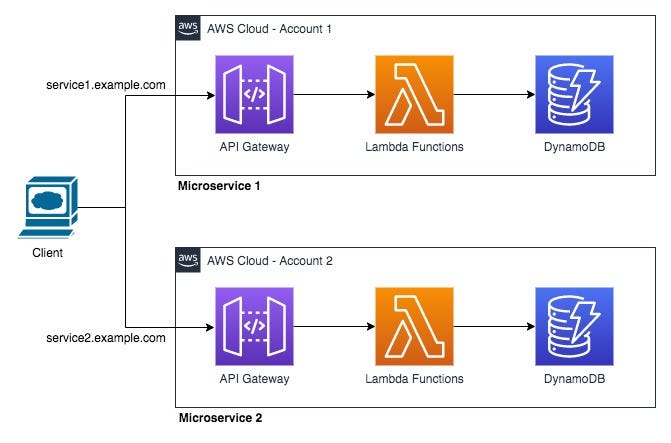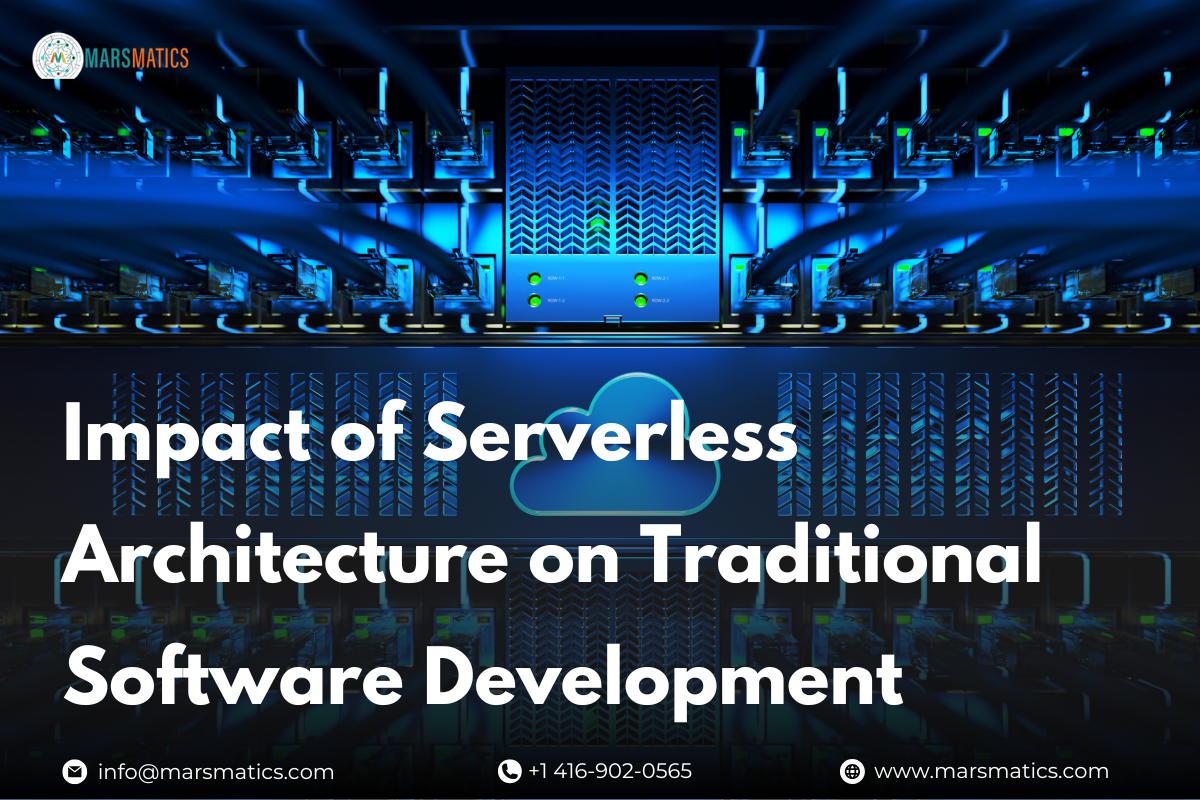Impact of Serverless Architecture on Traditional Software Development
Imagine if building software was as easy as flipping a light switch—quick and straightforward. That’s the promise of serverless architecture, a new way of doing things that’s changing how we develop software. As we move from the old ways to this new method, it’s important to understand the Impact of Serverless Architecture.
When we compare Serverless architecture vs microservices, we see a big change in how fast and easily we can handle large amounts of work. But with these great features, we also have to be careful about security. Following serverless security best practices is key to keeping everything safe. Let’s dive into how serverless computing is shaping the future of technology, making things faster and more efficient.
What is Serverless Architecture?
What is serverless architecture? It’s a way to build and run applications without having to manage servers. This means developers can focus more on their code without worrying about the operating system or the underlying infrastructure. The advantages of serverless architecture include paying only for the computing time you actually use, which can save money and increase efficiency.
When comparing Serverless architecture vs microservices, both allow you to break applications into smaller, independent pieces, but serverless takes it further by automatically handling the scaling and maintenance of these pieces. This setup makes it easier to manage large applications, ensuring they run smoothly and efficiently.
Why use Serverless Architecture?
The impact of serverless architecture on modern software development is huge, making it a popular choice for many companies. One of the main reasons to use serverless architecture is that it lets you build and deploy applications faster and more flexibly. You don’t need to worry about the underlying infrastructure, which means you can get your products to market quicker.
Additionally, serverless systems are designed to scale automatically with demand, so your application can handle more users without any extra effort on your part. Following serverless security best practices is also easier because many security aspects, like server and operating system maintenance, are managed by the service provider. This means you can focus on securing your application’s code and data rather than infrastructure, making your projects not just faster and cheaper to run, but also more secure.

Key Concepts of Serverless Architecture:
| Concept | Description |
| Event-driven | Serverless architectures are primarily event-driven. They respond to events and triggers automatically, which could be a change in data, a user action, or a request. |
| Statelessness | Each function call in serverless architecture is treated as an independent, stateless request, meaning no function call depends on information from a previous one. |
| Scalability | Serverless functions automatically scale depending on the volume of requests. This means they can handle increases in traffic without manual intervention. |
| Microservices-friendly | Serverless architecture naturally complements a microservices approach, where applications are broken into smaller, independent pieces that can be updated individually. |
| Built-in Fault Tolerance | Many serverless platforms handle failures automatically. This means if a function instance fails, the platform can retry or redirect the request without manual intervention. |
| Cost-Effectiveness | With serverless, you pay only for the compute time you use, which can lead to significant cost savings, especially for applications with variable workloads. |
Changes in Development Workflow:
Serverless architecture introduces several changes to the traditional development workflow. Here are the key points highlighting these changes:
- Developers can concentrate on writing code rather than managing servers or infrastructure. This shift increases productivity and speeds up the deployment process.
- Serverless allows for quicker iterations and updates. Changes can be deployed without affecting the entire system, similar to microservices but without the overhead of managing the services.
- Workflow becomes more event-driven, as serverless functions are typically triggered by specific events. This means developers need to think in terms of events and how they initiate functions.
- Each function can be deployed independently, reducing dependencies and potential conflicts in large teams.
- The platform automatically adjusts to handle loads, making it essential for developers to understand how scaling impacts performance and costs.
- Given the decoupled nature of serverless applications, there’s a greater emphasis on APIs for interaction between services. This is essential for communication in Serverless architecture vs microservices, where microservices are still managed but serverless abstracts the server management completely.
- Since billing is based on function execution and run time, developers need to be more aware of code efficiency and execution cost.
- As functions are isolated, security practices shift towards securing the code and data inputs/outputs rather than traditional network security, which is often handled by the provider.
Contact Canada’s Leading Software Development Company
Cost Implications:
The impact of serverless architecture on cost is significant and multifaceted, especially as we look into 2025. Here are some key aspects to consider:
- Pay-as-You-Go Pricing: Serverless computing typically follows a pay-as-you-go model where you are charged based on the number of executions and the duration of those executions. This can lead to substantial cost savings for applications with fluctuating workloads, as you only pay for what you use.
- Reduced Operational Costs: Since server management and maintenance are handled by the service provider, the costs associated with these activities are greatly reduced or eliminated. This shifts the financial burden from fixed to variable costs, aligning spending with actual usage.
- Cost of Scaling: Serverless architectures scale automatically to meet demand. This means that costs will scale linearly with use, eliminating the need for over-provisioning and the associated costs.
- Development Efficiency: The reduced need for infrastructure management frees up development teams to focus on product improvements and innovation, potentially reducing the overall time to market and associated labor costs.
- Serverless Security Cost: Implementing serverless security best practices is essential and involves costs related to securing the application code and data transfers rather than infrastructure. While the service provider handles much of the security, businesses must invest in application-level security measures, which might include using additional security tools and services designed for serverless environments.
- Monitoring and Management Tools: While serverless reduces many traditional costs, it requires investment in monitoring and management tools to track function performance and cost. These tools help avoid unexpected charges by providing insights into function executions and resource usage.
By 2025, as serverless technologies become even more integrated into mainstream development practices, understanding and managing these cost implications will be crucial for businesses looking to optimize their software development budgets effectively while maintaining strong security practices.
Also Read: Top Tools and Best Practices for Securing Your Code
Performance and Scalability:
The advantages of serverless architecture shine brightly in its performance and scalability. Serverless platforms can automatically adjust computing resources to match the demand almost instantaneously without human intervention. This elasticity allows for handling peak loads effectively, ensuring that applications are always responsive, regardless of user volume. This scalability is a pivotal impact of serverless architecture, allowing companies to efficiently manage resources without overprovisioning.
Security Considerations:
When it comes to security, serverless security best practices are vital. Since serverless applications rely heavily on third-party services, ensuring secure data transmissions and safeguarding endpoints becomes paramount. Practices such as implementing robust access controls, encrypting sensitive data at rest and in transit, and regularly auditing the security configurations are necessary. Additionally, the serverless security cost should be factored into the project budget. As protecting serverless applications often requires specialized tools and expertise.
Cost of Application Software for Startups
Impact on Team Roles and Skills:
The impact of serverless computing extends beyond technology, influencing team roles and skills. As infrastructure management needs decrease, developers can focus more on writing code and improving application functionality. However, this shift also requires teams to upskill in new areas such as API integration, serverless application lifecycle management, and performance optimization. Understanding serverless architectures enhances a team’s ability to innovate rapidly, pushing forward with modern development practices.
Future Trends and Predictions:
Looking ahead, the trajectory of serverless computing points towards greater integration with technologies like artificial intelligence and machine learning. Enhancing automated decision-making processes. We may also see a deeper Serverless architecture vs microservices integration, where both architectures coexist more seamlessly, offering robust solutions that capitalize on their unique strengths. As Internet of Things (IoT) devices proliferate, serverless could become crucial in processing vast amounts of data efficiently and cost-effectively. The continued evolution of serverless will likely focus on overcoming existing limitations related to state management and multi-cloud deployments, broadening its use cases and industry adoption.
Conclusion:
The Impact of Serverless Architecture on traditional software development is both profound and transformative. By eliminating much of the overhead associated with maintaining servers, serverless computing allows teams to deploy applications faster and with greater flexibility. The advantages of serverless architecture include significant cost reductions, improved scalability, and enhanced development efficiency—benefits that are reshaping how companies approach technology projects.
As we consider Serverless architecture vs microservices, it’s clear that serverless offers a compelling alternative that aligns with the microservices principle of building resilient, independent systems but with even greater efficiency and scalability. However, embracing this model also requires attention to serverless security best practices to mitigate potential risks, and awareness of serverless security costs to ensure comprehensive protection.
In summary, the impact of serverless computing is set to grow as more organizations recognize its potential to drive innovation while reducing costs and complexity. This shift not only enhances the technological landscape but also demands a strategic approach to development, security, and team dynamics. As serverless technology evolves, it promises to offer more sophisticated solutions that could further revolutionize the field of software development.
FAQs
What is serverless architecture and how does it differ from traditional hosting?
Serverless architecture lets developers run code without managing servers, unlike traditional hosting where servers are manually configured and maintained.
How can serverless architecture reduce operational costs for software development?
It charges only for actual code execution time, eliminating the need to pay for idle server resources.
What are the main security concerns with serverless computing, and how can they be mitigated?
Concerns include insecure dependencies, event injection, and privilege escalation; mitigation involves strict access control, input validation, and regular audits.
How does serverless computing affect the roles and skills required within software development teams?
It shifts focus toward event-driven design, cloud services, and DevOps, reducing the need for server management skills.








